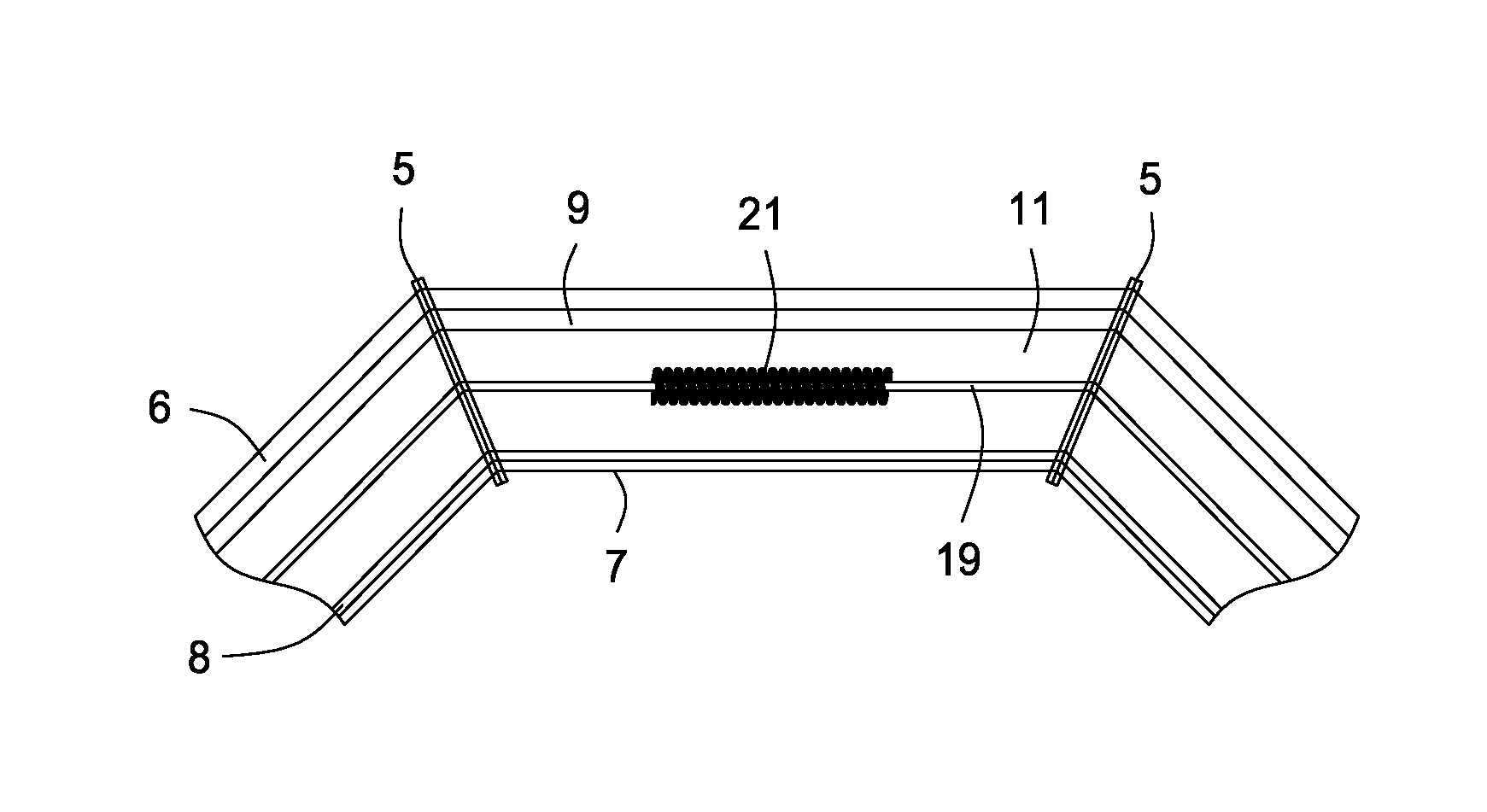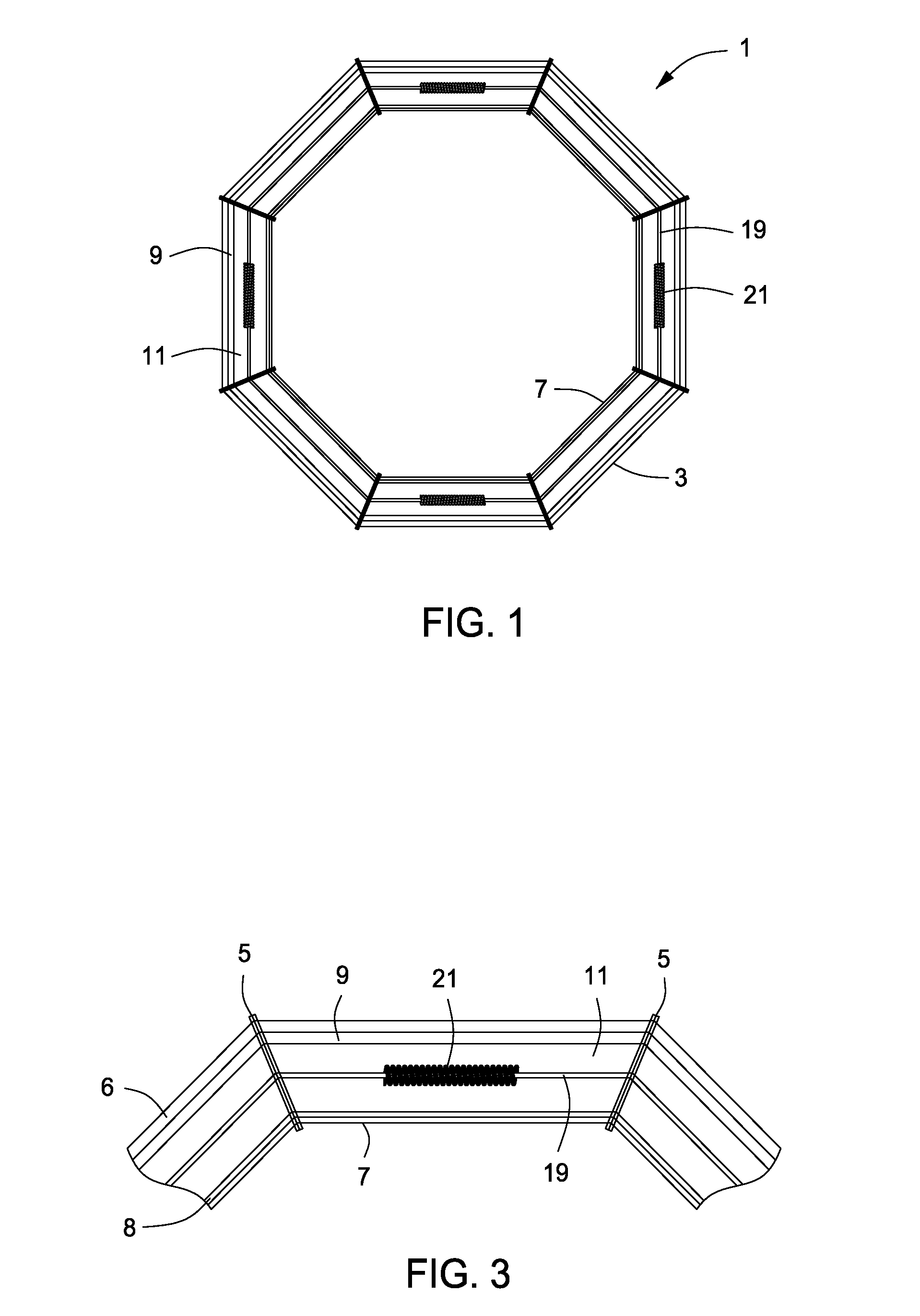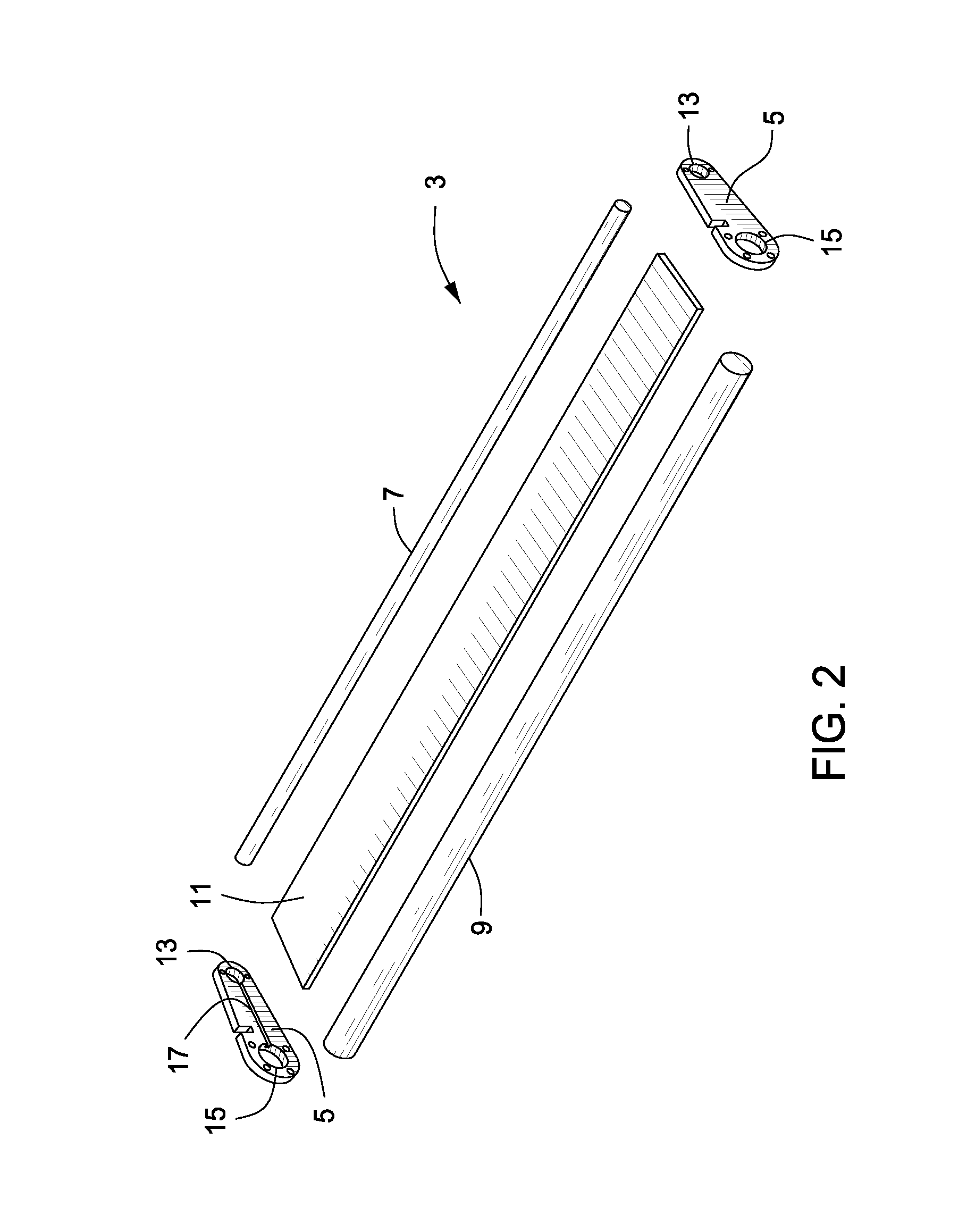Airborne electromagnetic (EM) survey system
a technology of electromagnetic survey and airborne electromagnetic, which is applied in the direction of electric/magnetic detection for transportation, using reradiation, instruments, etc., can solve the problems of affecting the survey data, overwhelming the receiver, and affecting the ability of the secondary field to sense, so as to minimize the size and weight of the structure, reduce noise, and maximize the rigidity of the structure
- Summary
- Abstract
- Description
- Claims
- Application Information
AI Technical Summary
Benefits of technology
Problems solved by technology
Method used
Image
Examples
Embodiment Construction
[0022]The invention will be described for the purposes of illustration only in connection with certain embodiments; however, it is to be understood that other objects and advantages of the present invention will be made apparent by the following description of the drawings according to the present invention. While a preferred embodiment is disclosed, this is not intended to be limiting. Rather, the general principles set forth herein are considered to be merely illustrative of the scope of the present invention and it is to be further understood that numerous changes may be made without straying from the scope of the present invention.
[0023]The present invention consists of an airborne electromagnetic survey system, which includes a transmitting assembly for conducting geological surveying, and is designed to be towed by an airborne vehicle. Preferably, the vehicle is a helicopter, but those having ordinary skill in the art will appreciate that other vehicles, such as vertical take-...
PUM
 Login to View More
Login to View More Abstract
Description
Claims
Application Information
 Login to View More
Login to View More - R&D
- Intellectual Property
- Life Sciences
- Materials
- Tech Scout
- Unparalleled Data Quality
- Higher Quality Content
- 60% Fewer Hallucinations
Browse by: Latest US Patents, China's latest patents, Technical Efficacy Thesaurus, Application Domain, Technology Topic, Popular Technical Reports.
© 2025 PatSnap. All rights reserved.Legal|Privacy policy|Modern Slavery Act Transparency Statement|Sitemap|About US| Contact US: help@patsnap.com



